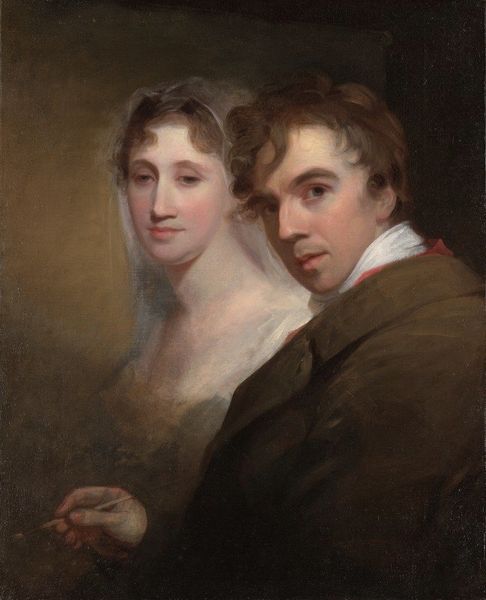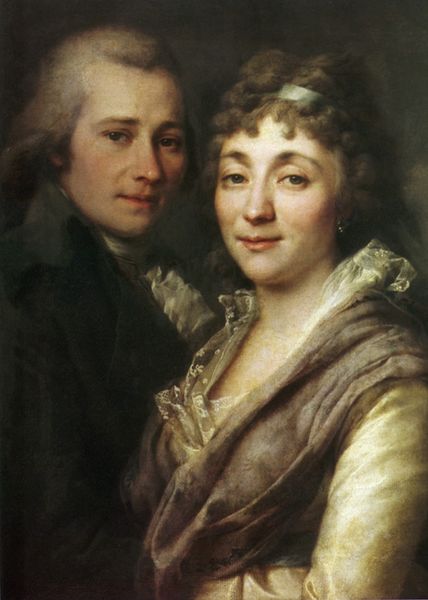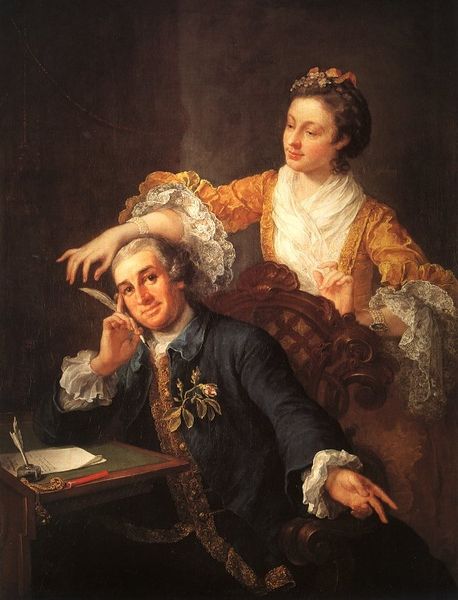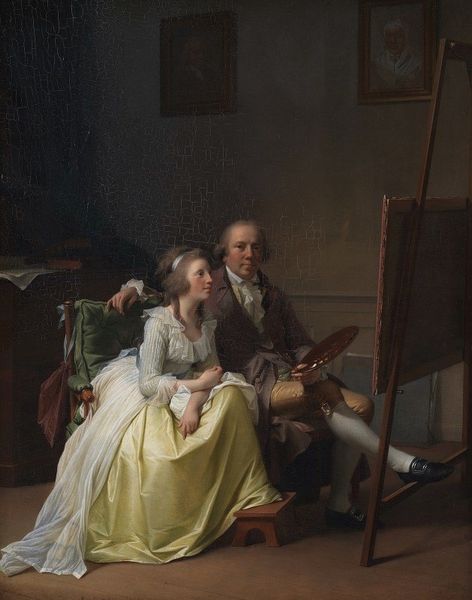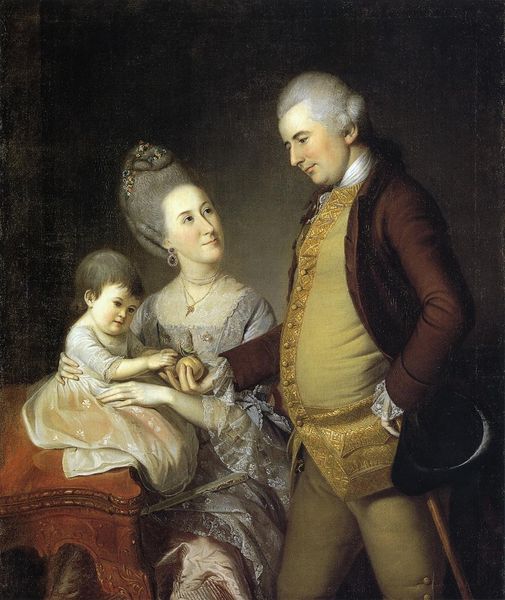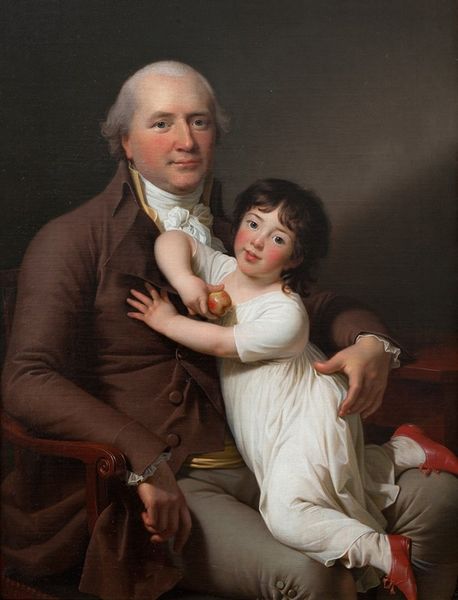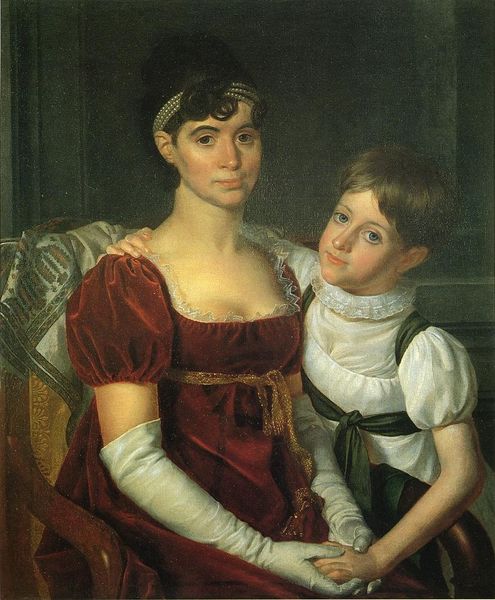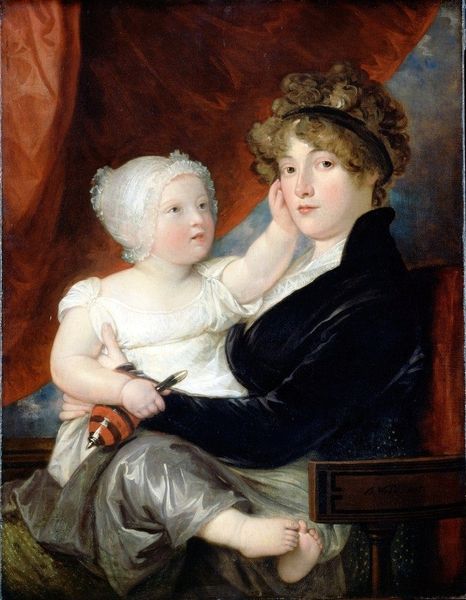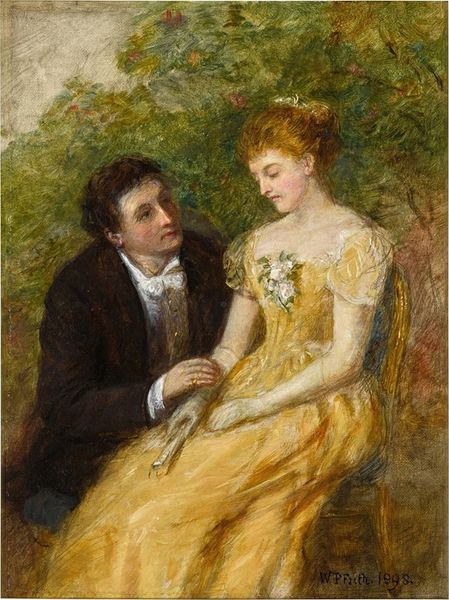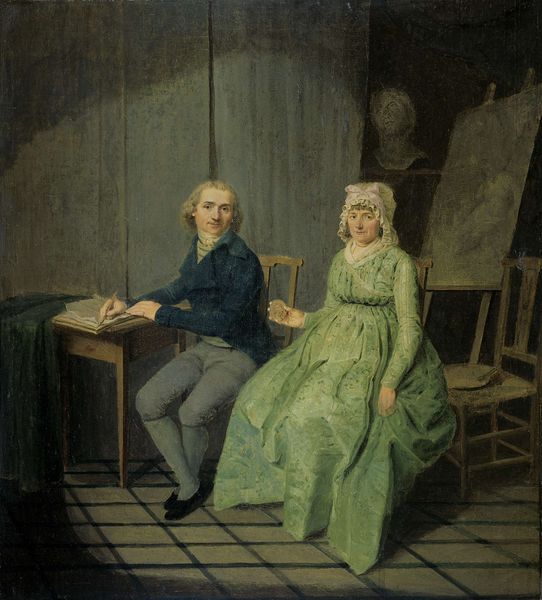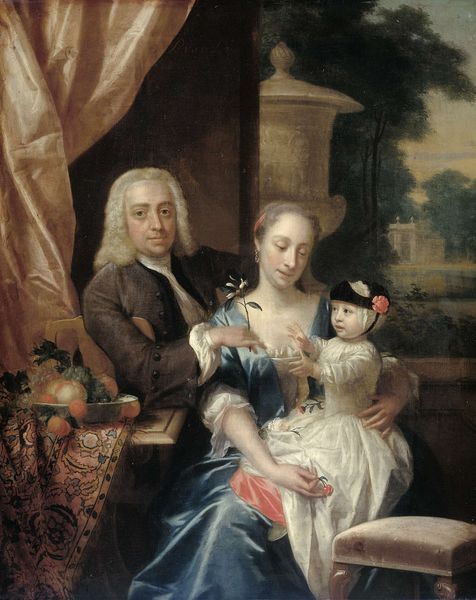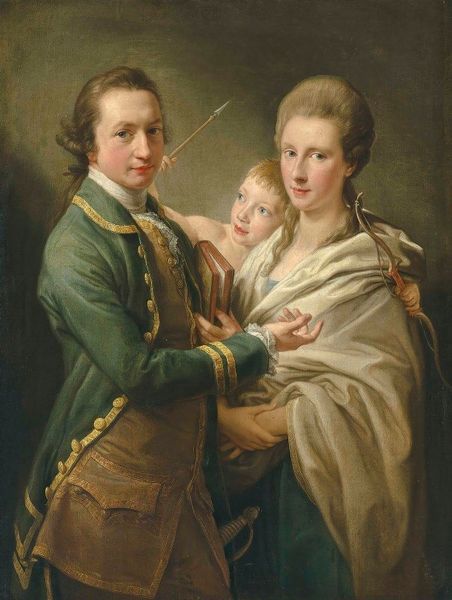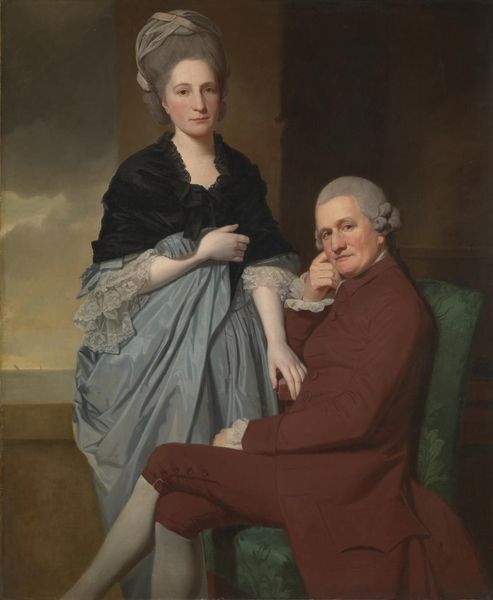
Hendrik Arend van den Brink (1783-1852) and his Wife Lucretia Johanna van de Poll (1790-1850) 1805 - 1830
0:00
0:00
painting, oil-paint
#
portrait
#
painting
#
oil-paint
#
romanticism
#
genre-painting
#
academic-art
Dimensions: height 103.5 cm, width 84.7 cm, thickness 3.5 cm, depth 13 cm
Copyright: Rijks Museum: Open Domain
Editor: We’re looking at a painting titled "Hendrik Arend van den Brink (1783-1852) and his Wife Lucretia Johanna van de Poll (1790-1850)," an oil painting made sometime between 1805 and 1830. The subjects exude such domestic tranquility! How do you interpret this work within its historical context? Curator: It’s fascinating how this portrait, seemingly straightforward, reflects complex social dynamics. Given its timeframe, the Dutch Patriciate was diminishing; how can portraiture reinforce class structures during periods of upheaval or shift? Editor: That's an interesting angle! I hadn't considered that. So, in what ways might this painting uphold or question those existing power dynamics? Curator: Consider their poses. While presented as equals, she is holding a book, representing culture. How could that signify their specific social roles in marriage during that time, reflecting their contributions to the family's social standing, beyond mere domesticity? Also note his severe stare directly confronting the viewer. Editor: He does seem more assertive while she is turned towards us with a softer expression. So, are you saying that portraiture then was less about capturing likeness and more about conveying social messages? Curator: Precisely. Every detail, from the fabrics to their posture, acted as a symbol. In a period defined by Romanticism and burgeoning social change, this painting attempts to negotiate tradition and the shifting roles of the bourgeois class through its own carefully crafted visual language. Does observing this painting now make you think about representation and gender? Editor: Definitely. Seeing the couple positioned in a very intentional manner really highlights the messages around their social standing. It challenges me to consider my contemporary viewpoint when looking at such classical portrayals. Curator: Absolutely, analyzing portraiture through the lens of gender and social identity gives us insight not only into the past but also how we continue to interpret power dynamics in our contemporary landscape.
Comments
No comments
Be the first to comment and join the conversation on the ultimate creative platform.
